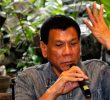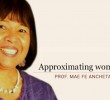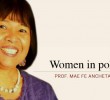The recent United Nations Education, Scientific and Cultural Organization (UNESCO) report shows that more and more children are not able to continue studying even in secondary level.
The report, titled “Education for All 2000-2015: Achievements and Challenges” states that in the Philippines, only 69 percent of adolescents from the poorest households who reached the end of primary school continued into lower secondary school in 2008 compared with 94 percent of adolescents from the richest households, a situation hardly different relative to 2003.”
Education for all (EFA) is a global movement led by UNESCO aiming to meet the learning needs of all children, youth and adults by 2015.
Child-focused organization, Salinlahi Alliance for Children fears that the implementation of the K to 12 program which will lengthen school year from 10 years to 12 years would further aggravate the inability of poor students to continue their studies. In Mindanao, the Save our Schools Network shares the same assessment as poor communities continue to lament their situation that hinders them to pursue formal education for their children. The common reasons why students are forced to stop studying are school expenses, even in public schools. With the K to 12 program, school expenses would also increase.
In 2000, during the World Education Forum in Dakar, Senegal, 164 governments, including the Philippines, agreed on the Dakar Framework for Action, Education for All: Meeting Our Collective Commitments. Six key measurable education goals,which aim to meet the learning needs of all children, youth and adults by 2015, were identified. These goals are: expand early childhood care and education; provide free and compulsory primary education for all; promote learning and life skills for young people and adults; increase adult literacy by 50 percent; achieve gender parity by 2005, gender equality by 2015; and, improve the quality of education.
Gaps
The Philippines Education for All 2015 National Review shows there are still gaps to fill to reach the target.
Kindergarten has a net enrollment rate for school year 2012-2013 of 77 percent, falling short of the target of 100 percent. The primary school age participation (grade one pupils) rate is 95 percent in the same school year. Secondary school age participation rate is 65 percent. The report also stated that “keeping children in school until they finish their basic education remains a challenge as completion rate for elementary, on the average from school year 2005?2006 to school year 2012?2013, was only around 72 percent. For the secondary completion rate, the average from school year 2005-2006 to school year 2012-2013 was around 73 percent.”
The report also stated that eliminating dropout in the first three grades remains an issue with Grade 1 having a 13.04 percent school leaver rate for school year 2011-2012.
In 2013, the Alliance of Concerned Teachers (ACT) consolidated a report that shows how facilities and teachers compete for a badly needed raise to meet the requirements of a conducive learning in public schools where shortages in teachers, classrooms, textbooks, chairs, water and sanitation facilities, schools are glaring examples on gaps as learners figures reached 23.9 million.
Meanwhile, the Government Assistance to Students and Teachers in Private Education or GASTPE is a stop gap measure in reaching out to the secondary level of students. It was targeted in 2013 that P7 billion budget was needed for 1 million grantees in order to decongest the already crowded public high schools. This amount is actually allotted to private schools with enough rooms and facilities that could accommodate the public high school students. These translate to the operationalization of the public-private partnership.
Critics raise at the moment this system of intervention where social service is becoming privatized. Education for all would just become a call to action when education truly belongs to those who could afford.
Moreover, the K to 12 scheme in this era of chronic crisis does not meet comprehensively the needs and rights of the young people to development. More issues arise in children’s participation rate as poverty incidence rises.
The most critical factor is that the Philippine government still has not complied with the budget spending on education recommended by UNESCO that six percent of the country’s Gross Domestic Product (GDP) should be allocated to education. Bigger chunk of the national budget still goes to military spending than to social services.
The Philippines Education for All 2015 National Review said that while the Department of Education budget has increased from P207.2 billion ($4.6 billion) in 2001 to P336.9 billion ($7.5 billion) in 2014, “However, there remains fiscal shortfalls as the overall education budget allocation is still way below the recommended six percent of GDP, as government spending in the education sector is only 2.6 percent of GDP in 2011.”
What illuminates the gaps in the education for all campaign of the government is the status of children in the countryside – the children of peasant and indigenous communities, who are targets of attacks –labeled as children of resisting communities. These communities are known for their strong opposition to the environment plunder occurring in the resource-rich upland villages.
Military operations through its para-military units continue to block children to their daily routine in schools if not killed in the process. More than 100 IP schools are affected by the red-tagging when these facilities are expressions of people’s initiatives in situation of decades of state neglect and when the state favors foreign corporations to mine the areas of the indigenous communities in the mountain ranges of Mindanao, especially, than respecting the IP right over ancestral domain and preservation of cultural heritage.










